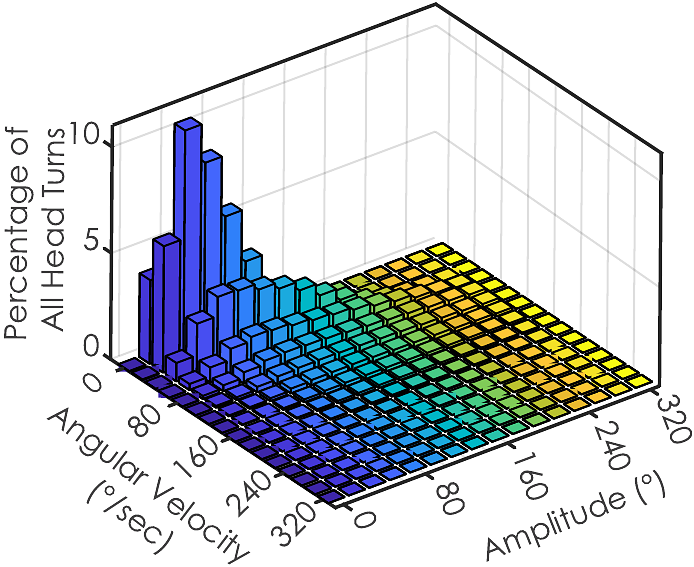Continuous Monitoring of Head Turns: Compliance, Kinematics, and Reliability of Wearable Sensing

Continuous Monitoring of Head Turns: Compliance, Kinematics, and Reliability of Wearable Sensing
Cho, S. Y.; Dibble, L. E.; Fino, P. C.
AbstractWearable devices offer objective mobility metrics for continuous monitoring but often focus on traditional measures like step count or gait speed. Other quantitative metrics such as head kinematics may provide valuable insights into mobility, balance, and sensory integration, given the head\'s central role in coordinating vestibular, ocular, and postural control. Yet, basic knowledge about capturing daily living head turns, including participant compliance, algorithms, normative data, and reliability, is not yet established. This study aimed to resolve this knowledge gap by capturing head and trunk movement kinematics over a 7-day period and to establish normative data in healthy adults. Participants (n = 24) wore head-mounted sensors for an average of 16.38 hours per day (SD = 4.43), completing 5,163 (SD = 1,466) head turns daily, with 72% occurring independently of trunk motion. Head turn amplitude (M = 58.18 deg, SD = 4.26 deg) was comparable to lumbar turns, while peak velocity was higher for head turns (M = 104.49 deg/s, SD = 12.08 deg deg/s). By the second day, all head turn metrics achieved excellent reliability (ICC > 0.9), supporting the feasibility of multi-day monitoring. Additionally, we examined the relationship between head motion and other mobility metrics and established recommendations for implementing similar protocols for capturing future studies, including the minimum number of days required for reliable data collection. Findings from this study provide a foundation for future multi-day continuous monitoring of head kinematics in both healthy and clinical populations.